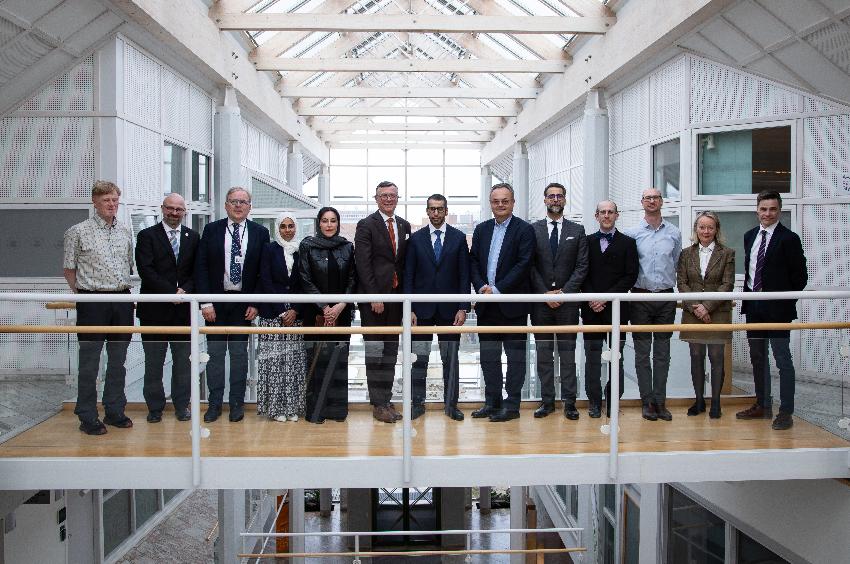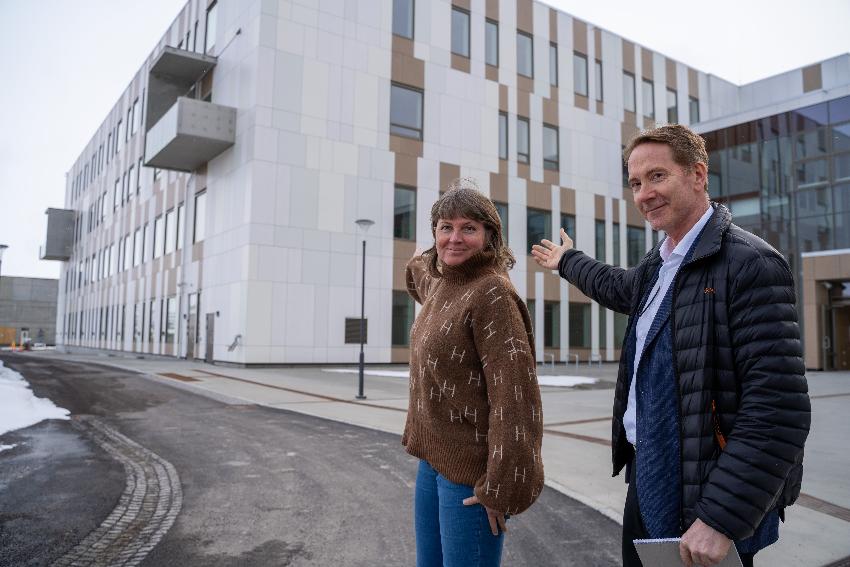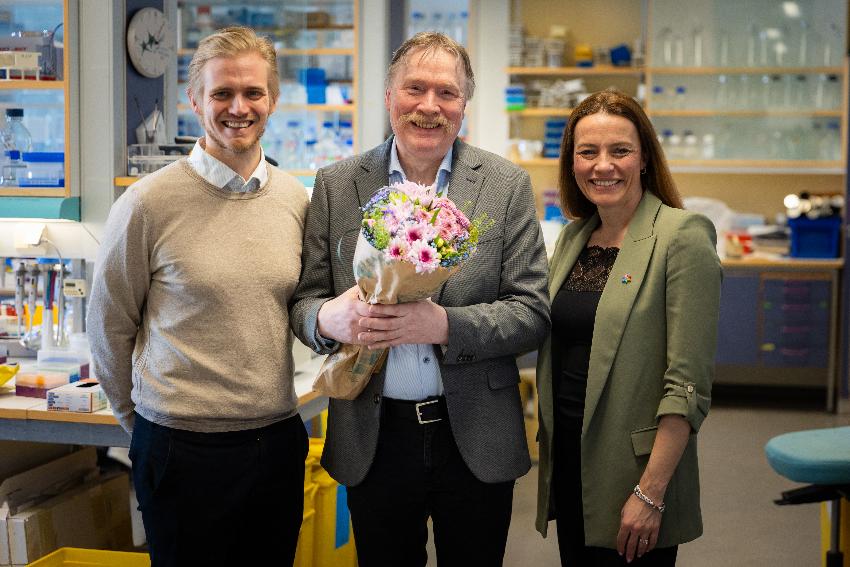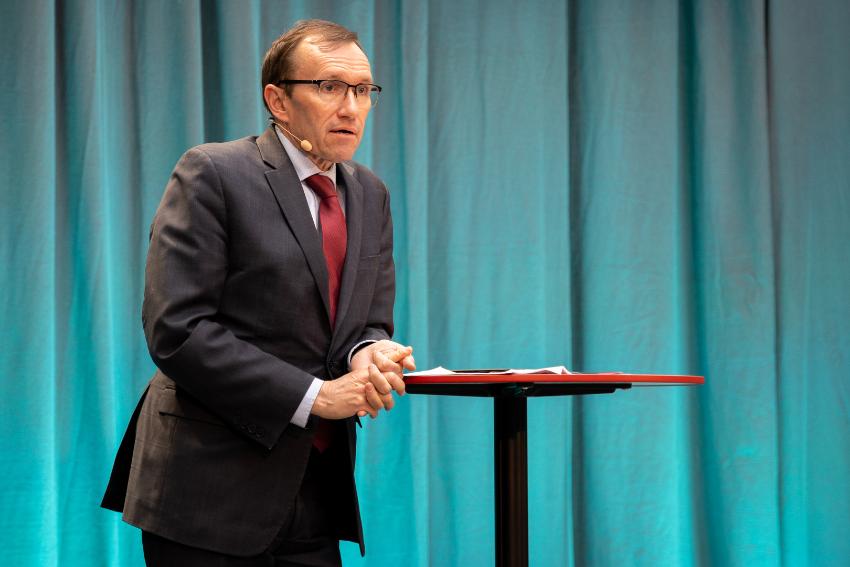UiT Internal call for innovation projects
UiT is for the third time announcing a call for innovation projects where research groups at UiT can apply for innovation positions within predetermined criteria. The aim of this internal instrument is to provide resources in a critical phase of innovation processes and to bridge the gap between basic research and commercialization of results.

Concept and what can be funded
The call for 2023 is for two innovation positions for two years each. The call is suitable for research groups who have produced results from previous and existing projects with potential for commercial development and exploitation. The aim of this initiative is to contribute to an increased amount of research being further developed and commercialized.
The positions must be integrated with existing projects at UiT and contribute to ongoing research and innovation processes. Relevant projects must describe and document promising results from previous phases. Furthermore, results from which the innovation project are based, should generally not have been published or handled in such a way that it prevents commercialization. Applicants must describe how the innovation position is embedded in current projects and further evolve around the role of the researcher with respect to the innovation process.
The application must describe how the project requires collaboration with internal and external partners to continue the project’s development. Applicants must describe the potential for the project to acquire additional external funding, as well as how external partners will be involved in development stages.
Applications will be evaluated based on the quality and impact of the project, the qualifications of the named candidate(s) for an innovation position and the quality of the internal and external partner. Candidates can be recruited both externally and internally, but candidates with relevant experience working on a project at UiT during a PhD, postdoc and/or researcher position are considered particularly suitable. Proposals will be evaluated by a team of internal and external experts.
Available funding
- The funding covers salary and indirect costs for researcher position(s) for the named candidate(s).
- No operating funds will be provided. Such funding must come from existing projects.
- The funding is 1 050 000 NOK per year for two years, salary cost and indirect cost above this will not be funded.
- It is expected that the applicant can show in the budget that there is operating funds of at least 160 000 NOK per year.
Eligibility
This is an internal call and only research groups and scientific staff at UiT are eligible applicants. Furthermore, projects must be anchored in previous and/or current projects at UiT. Candidates to be employed in the innovation positions must have relevant professional experience and background in such a way that they can fulfill the role in the project without training. Projects must be based on a DOFI submitted to UiT.
Eligibility criteria:
- Eligible applicants are employed scientific staff at UiT (both temporary and permanent employees).
- Projects must be based on a DOFI submitted to UiT. The confirmation letter(s) for submitted DOFI from UiT must be attached.
- Candidates for innovation positions must have completed a PhD-degree.
- Applicants may themselves also be candidates for positions.
Evaluation process and evaluation criteria
The applications will be evaluated by a panel consisting of internal and external experts, and according to standard criteria used by The Research Council of Norway for qualification projects:
Excellence
In this section, the reasoning behind the application and any work carried out prior to the project are assessed.
i. Research results:
- To what extent is the underlying research base adequately described, including who is behind the research and how it originates from publicly funded research in a research organisation, what is novel, why is the research interesting, where is the project on the TRL scale?
ii. Degree of innovation:
- To what extent is the need or problem to be solved in a new or better way accounted for and how does it differ from existing solutions (state-of-the-art)?
Impact
In this section, the long-term plan and what will be done after the project has been completed are assessed.
i. Market insight and areas of application:
- To what extent are market insight, areas of use, and the reasons why the results are commercially interesting accounted for? To what extent does the applicant refer to dialogue with relevant actors?
ii. Strategy for realization:
- To what extent have the main aspects concerning what will happen after the project been accounted for, including any hypotheses addressing choice of strategy, challenges, risks and rights?
iii. Benefit to society and sustainability:
- To what extent does the project describe important societal challenges that the project may potentially contribute to solve?
Implementation
In this section, the short-term plan and what will be done during the project to trigger the next phase, are assessed.
i. Project plan:
- To what extent does the project explain what will be done, why the activities are important, what is considered a successful outcome, and what the results will trigger?
- To what extent does the project present a realistic implementation plan with measurable milestones and associated activities?
ii. Management, team and expertise:
- To what extent does the project have access to the necessary resources and expertise to implement the project?
- To what extent does the project have a plan for involving relevant external actors (investors, partners, clients, stakeholders, mentors, public and societal actors etc.)?
In addition, interdisciplinary collaboration is considered an advantage, but not a prerequisite.
Application requirements and submission
The application must include in addition to the project proposal, a CV of the candidate for the innovation position, a budget and confirmation letter(s) for submitted DOFI. Also, the application needs to be approved by the management at the faculty/unit.
The project proposal shall be no longer than 5 pages, including references, but excluding CV. Use the following template. Applications with formal errors or exceeding the page limitations will not be accepted. The CV of the candidate (use the following template) shall be no more than 4 pages.
The applications with attachments shall be submitted by Nettskjema. Only applications submitted by nettskjema will be approved. Application deadline is 08.12.23 at 13:00 CET.
Inquiries and additional information
Please contact Inger Lin U. Ræder, inger.l.rader@uit.no, for any question you may have to this call.
Kortnytt fra Seksjon for forskning og utdanningskvalitet, Seksjon for forskning og innovasjon






